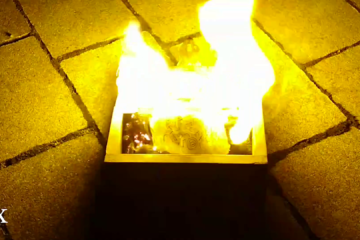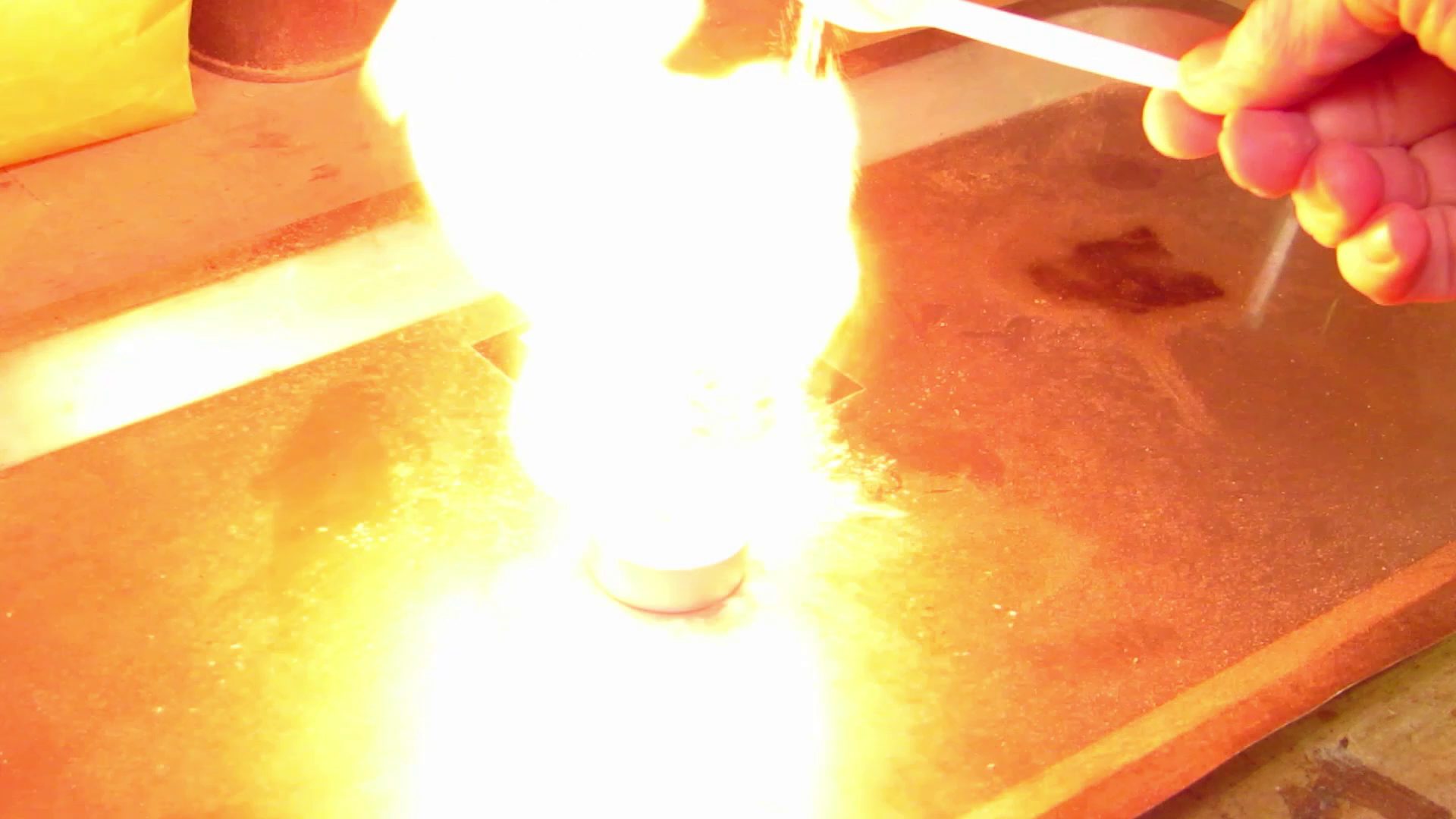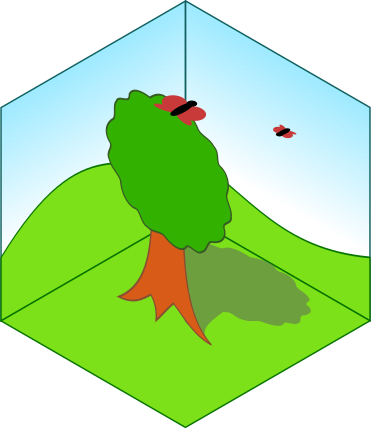It will not come as a surprise to you that I am a big advocate of using paper models in your game. The good news is that there is nothing lost by trying something new. We have used plastic miniatures at our table for ages, side by side to paper minis, and right next to homemade ones from foam rubber and paper balls. “Theater of the Mind” can work great as well, but sometimes a visual cue can go a long way to flesh things out.
In the end, you have to decide what works for your game, and I want to help you make an informed decision. If you are not sure whether you need visual aids in your roleplaying games to begin with, let me convince you. Read on below to learn about what paper models can bring to your gaming table.
What are we talking about?
There are many things made from paper that can (and will) enhance your gaming experience, from versatile tiles printed to multi-layered cityscapes that cover your whole gaming table. But for the sake of this article, I need to define what we are talking about a little better.
When I say “paper models”, I am referring to things that you download, print and build yourself. This includes terrain tiles and maps, but also extends to miniatures and 3d scenery pieces (think crates).
The Advantages of Paper Models
If this sounds like a sales pitch to you then rest assured that it is. I want to sell you on the concept of paper as material for your gaming aids with all its advantages laid out here. Whether you go for free models or buy them to support the artists is only secondary to me.
So let us go through what paper models can offer. And yes, I will try and list some downsides as well below.
Low Barrier of Entry
Probably the biggest advantage of paper models is that you most likely have all the tools you need to make them at home already. When it comes down to it you need a printer, scissors, a ruler and glue. You also need cardstock, but a package of 250 pages will get you far if you are only starting out.
Of course you can get higher-quality tools later on, but as far as barriers of entry go, this one is pretty low. Most likely you can try the hobby using some free miniatures available on the internet using standard paper, just to get a feel for it.
To be fair, you do not need any tools for plastic miniatures, at the expense of several of the other benefits paper can bring to your table.
Low Per-Piece Price for Paper Models
You can get a large number of free paper models and minis on the internet. There is virtually something for everyone, from a number of publishers and artists. If you are curious, check out the growing link library here – and feel free to add to it if you encounter more awesome freebies.
There are also sets that you need to purchase, but as a rule of thumb, they cost less than a hand full of miniatures, and you are more likely to support a small business with your purchase.
And yes, you need cardstock to print these models and minis. And glue. But that cost is only a fraction of what plastic miniatures would cost. And while you have to to pay that fraction every time you print, that leads us directly to the next advantage of paper models.
Strength in Numbers
When you buy a miniature, you only get one. It is obvious really. When you want to have two of the same kind at the table, you need to buy a second mini, basically doubling your cost.
With paper models, you can print out as many as you want or need (for your own personal use, that is). This way, if you buy (or download for free) a set of zombies, you can make as many zombies as you could ever need.
This also applies to walls and maps – and to cases where one of your models or minis gets destroyed in any way. You would not believe how dangerous a place the gaming table can be. But whenever one of your minis gets soaked in lemonade, sat on, or torn to pieces by a frustrated player, you can easily print and make another one.
Versatility of Paper Models
There are a few more things that set paper as a material apart from plastic, resin or other cast materials. For starters, you can easily change the size of your mini or model by rescaling them (up to a point, but you will rarely long for miniatures larger than half a standard page in size. And even then, you can glue more together to make it fit). So if you want Dire Zombies to tower over your players, look no further. Same goes for smaller versions, too.
In addition to that, you are already cutting out things and gluing them together. So why not modify things a little more? This works best with minis, but can be applied to models as well. You could remove unwanted parts – like a sword in the hands of a bandit – or glue new parts to them – like that sword in the hands of a princess. You can even combine parts of several minis together to make something to suit your needs.
And taking things one step further – and assuming that you have the right to do so from the artist (which is usually not a problem when it is only for your own needs and that of your group), you can even work with the digital file and create such mash-ups on your computer, before printing. You can also do recolored versions this way.
Downsides of Paper Models
For the sake of not being too biased, there are some downsides to paper models, although in my humble opinion they are small and easily offset by the advantages. I guess I am too biased, but I guess that was to be expected.
Paper is succeptible to moisture. Spill a drink over plastic minis and they should be fine (depending on your choice of poison), whereas paper will get soaked and warp at best, and outright dissolve at worst. The per-unit cost makes them easy to replace, though.
This one applies mostly to 3d scenery. They can get deformed and even flattened when stored incorrectly, and the paper can not only kink but also tear. Again, you can easily print and make new ones when you are working with paper. And you can mess up plastic pieces by storing them the wrong way, too.
And in the spirit of full disclosure, we have used the cheapest of glue-sticks for out minis and models. It continues to work fine for minis, but some of the 3d pieces have come apart – 5 to 8 years after they were glued. Just putting it out there.
Bonus: Get your own Minis!
There are a number of artists out there that are really good at drawing paper miniatures – check out the list under Paper Minis. What’s more, some take requests! It might cost you as a commission, but this way, you can get a great looking, custom paper miniature to use for your character in any adventure to come. While this may not be for you, it is definitely something fairly unique.
(On a side note, there are sites and artists that offers 3D printable miniatures made to your custom specifications, but the advantages of paper still apply.)
Thanks for stopping by. If you liked this one you should check out my other articles. And maybe you find some inspiration with the paper models I made.
And as always, remember to Be Inspired!


